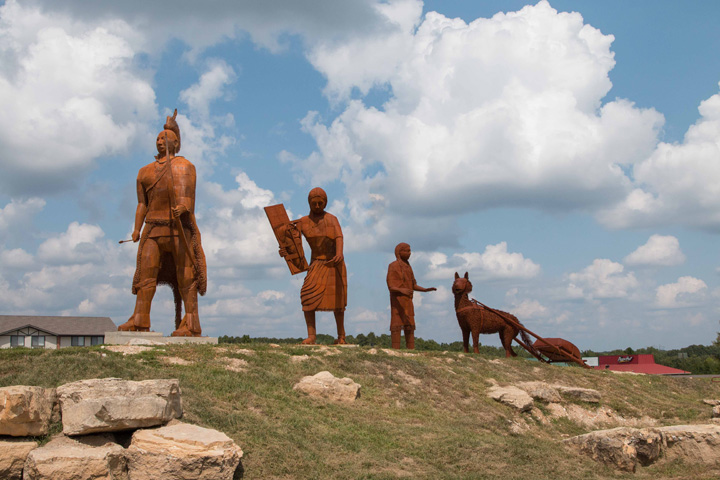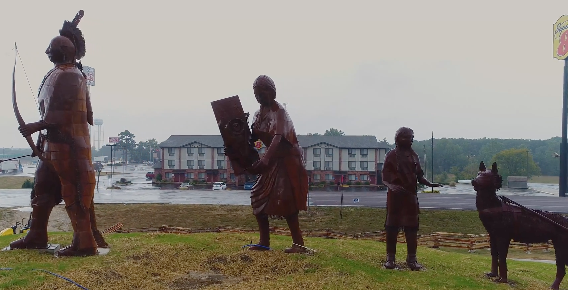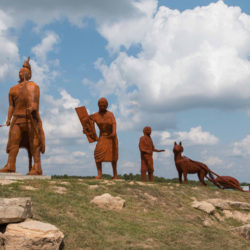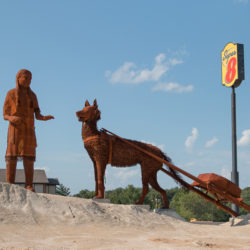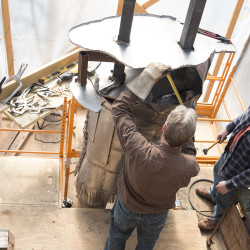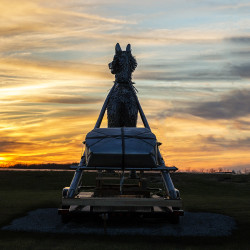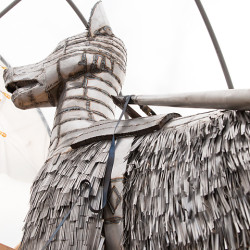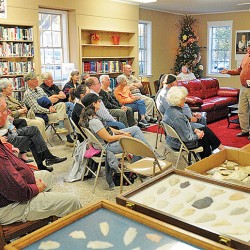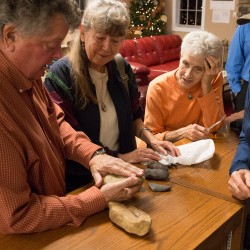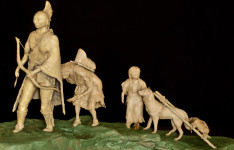The Beginning
The Planning Stage
It all started with a dream and soon turned into plans for construction of a 35-foot tall steel sculpture at the Cuba Visitor’s Center that celebrates the history and legacy of the Osage Nation. The project, which will be overseen by Cuba artist Glen Tutterrow, is now completed. “I had a dream of building something for the Osage Trail. We are here because of the trail that the Osage blazed for us way back when and I have always been very sensitive to the Native American culture”.
Execution
The sculpture depicts an Osage Indian family traveling westward along the Osage Trail. It features an Osage warrior in period-specific dress and historically accurate ornamentation, followed on the trail by his family. The Osage Tribe of Native Americans covered a wide range of territory in the American Midwest. Their hunting and warring expeditions spanned the entire Ozark Plateau region and included what would become the states of Kansas, Missouri, Oklahoma, and Arkansas.
The Monument
The sculpture stands 35 feet tall, 20 feet wide, and 80 feet in length. The sculpture depicts an Osage family moving westward on the Osage Trail. The monument is designed to work with the contours of the site which includes working water features and native plant landscaping. The monument allows interstate drivers to see the sculpture from the city limit boundaries, both east and west. This is one of the largest sculptures ever dedicated, & erected, to the Osage Nation.
The Monument
This area was originally the Trail of the Osage. Today, we have designated it as Interstate 44. Previously, it was romanticized as Historic Highway 66 and before that, the Springfield Road, but it has always been the Trail of the Osage. At the dawn of this nation’s expansion this trail carried furs and lead ore to St. Louis and brought back food, clothing, and supplies from St. Louis to the rural areas of Southwest Missouri. But this trail carried more than merchandise, it also carried ideas and innovation. It carried the ideas that would form a young, energetic, and growing republic of the early 1800’s. The sculpture you see before you is a tribute to the Osage Legacy. The sculpture stands 35 feet tall, 20 feet wide, and 80 feet in length. The sculpture depicts an Osage family moving westward on the Osage Trail. The monument is designed to work with the contours of the site which includes working water features and native plant landscaping. The monument allows interstate drivers to see the sculpture from the city limit boundaries, both east and west. This is one of
The Designers and Sculptors

Glen Tutterrow


